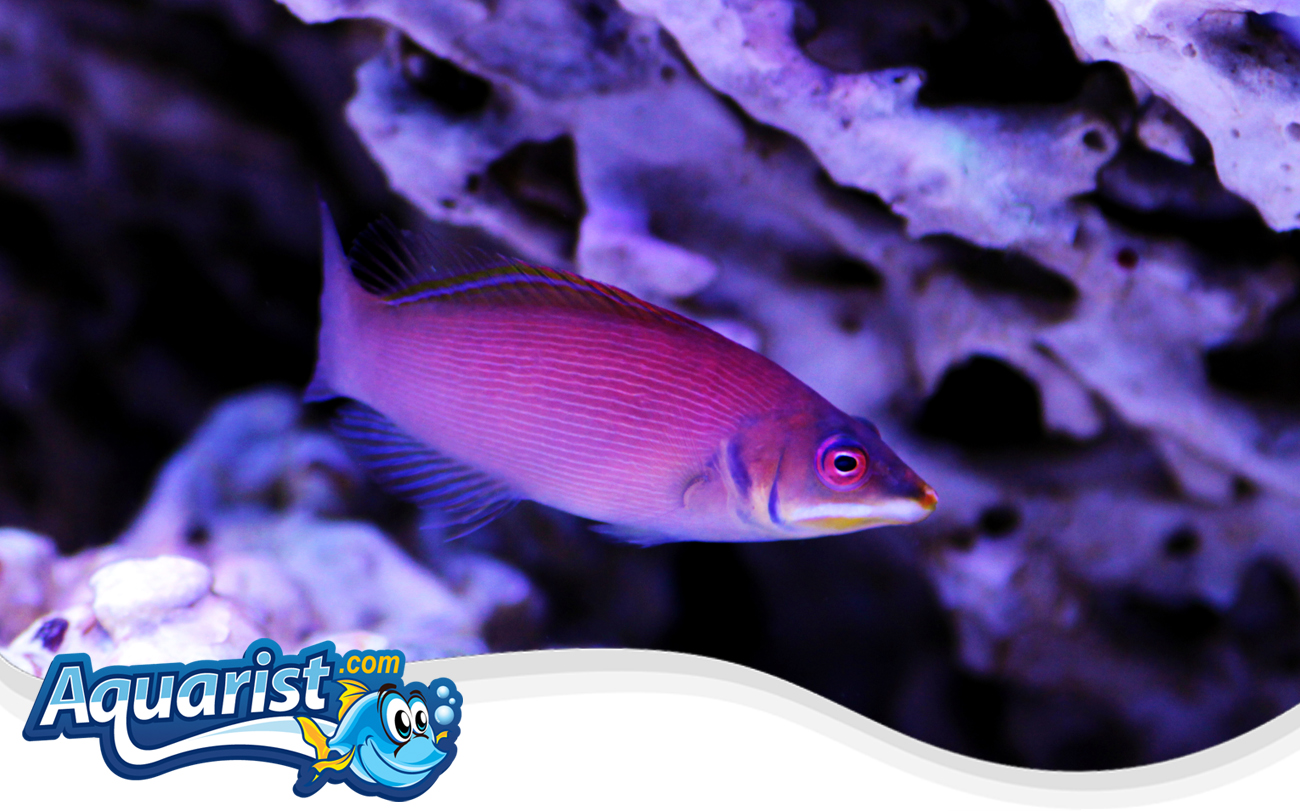Overview
- Native to the Indo-Pacific region, typically inhabiting coral-rich reefs and rocky areas.
- Characterized by its slender, reddish body with horizontal white stripes and iridescent blue markings on the face and fins.
- Known for being shy and secretive, often seen darting among rockwork and coral.
- Ideal for intermediate aquarists due to its specific habitat preferences and behavior.
Feeding
- Carnivorous; naturally feeds on small crustaceans, invertebrates, and zooplankton.
- In captivity, will accept a variety of meaty foods such as mysis shrimp, brine shrimp, finely chopped seafood, and quality marine pellets or flakes.
- Feed small amounts 2–3 times daily for best health and coloration.
- A varied diet helps ensure nutritional balance and overall vitality.
Habitat
- Best kept in a mature, established reef aquarium (minimum 30 gallons) with plenty of live rock and hiding places.
- Prefers aquariums with crevices, caves, and overhangs to retreat to when feeling threatened.
- Stable water parameters and low stress levels are key to success.
- Moderate water flow and efficient filtration are important for maintaining ideal conditions.
Fish Care
- Preferred water temperature: 72-78°F (22-26°C).
- Recommended pH level: 8.1–8.4; specific gravity: 1.020–1.025.
- Sensitive to water quality; regular maintenance and monitoring required.
- May be susceptible to ich and other marine diseases if stressed.
Compatibility
- Generally peaceful, but may become territorial toward smaller or similar-shaped wrasses.
- Reef-safe; does not bother corals or most invertebrates.
- Compatible with peaceful to semi-aggressive fish that won’t outcompete it for food.
- May not tolerate other Pseudocheilinus species in the same tank.
Aquarium Behavior
- Secretive and shy; typically spends much of its time darting among rocks and coral.
- Can become more confident and visible over time in a peaceful environment.
- May sleep in crevices or form mucus cocoons at night, a natural behavior for some wrasses.
- Best observed in well-aquascaped tanks with plenty of cover and minimal harassment from tank mates.


